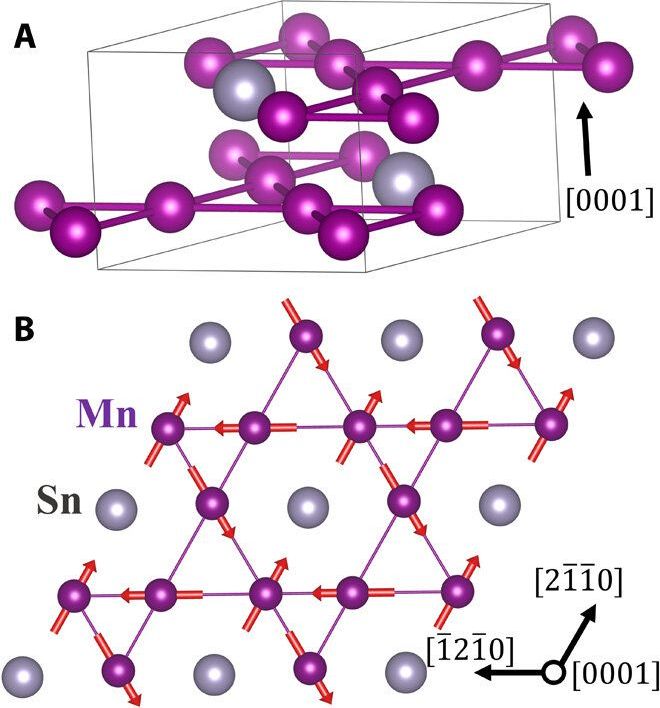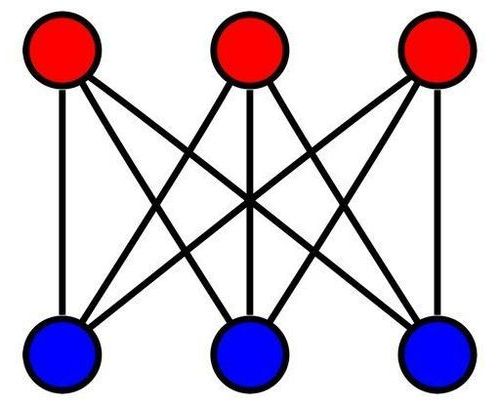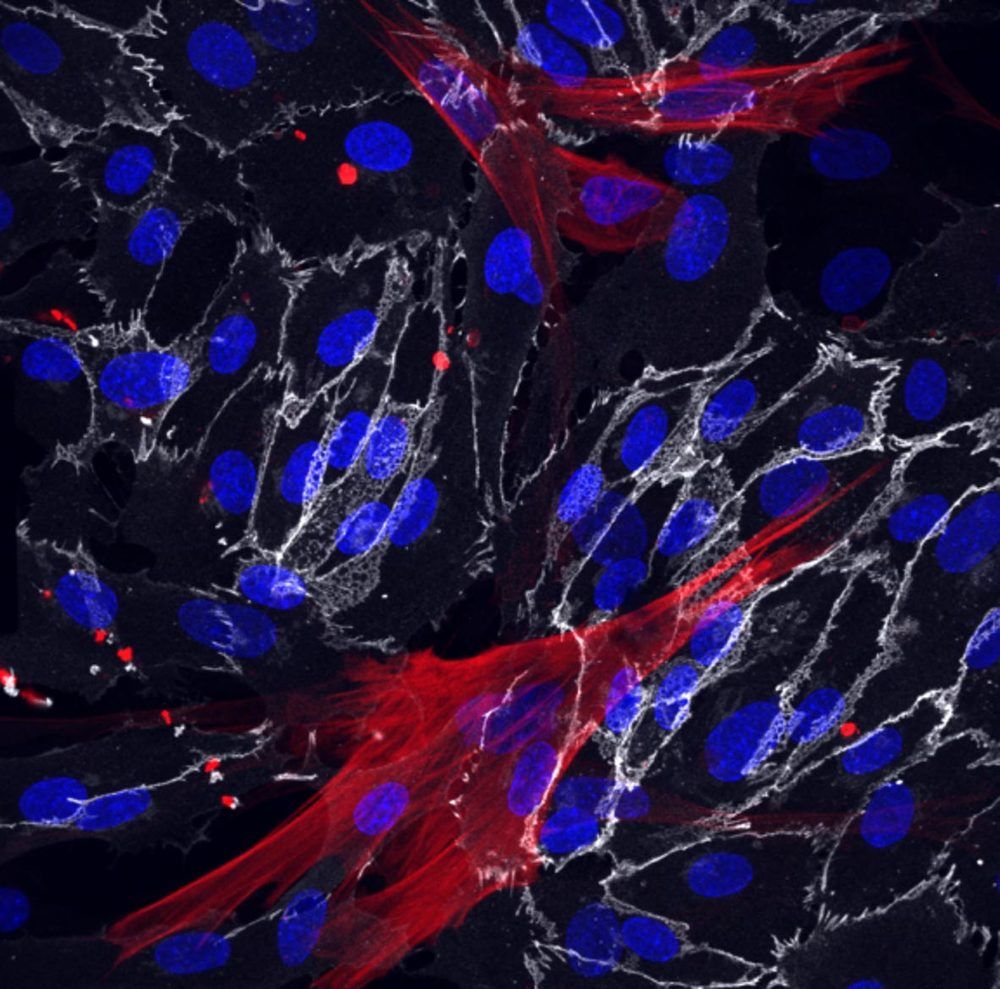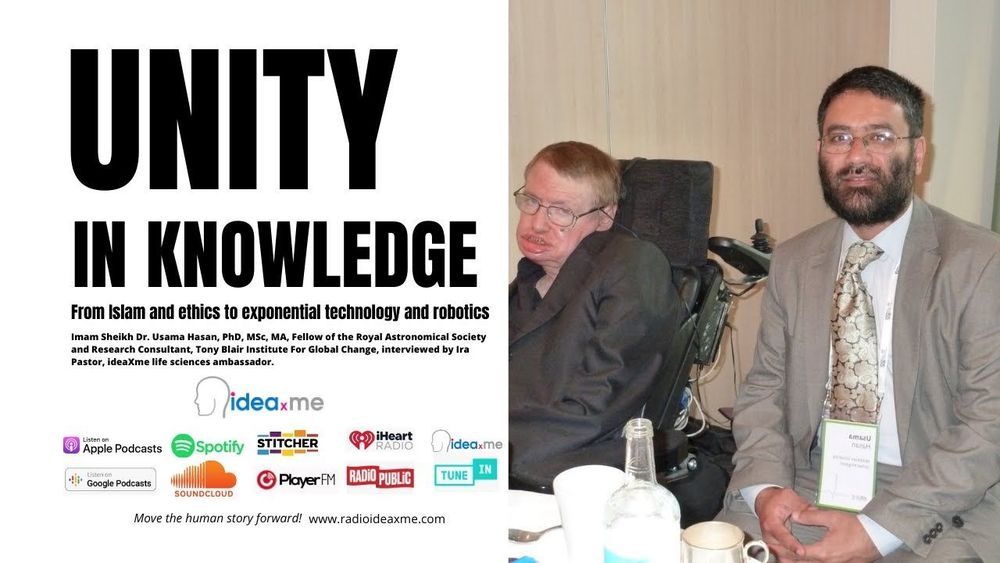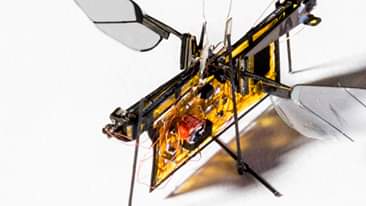Sep 9, 2020
Kondo physics in antiferromagnetic Weyl semimetal films
Posted by Quinn Sena in categories: engineering, particle physics, quantum physics
Emerging quantum materials can be defined by topology and strong electron correlations, although their applications in experimental systems are relatively limited. Weyl semimetals incorporating magnetism offer a unique and fertile platform to explore emerging phenomena in developing topological matter and topological spintronics. The triangular antiferromagnet Mn3Sn exhibits many exotic physical properties as an antiferromagnetic (AFM) Weyl semimetal (WSM), including an attractively large spontaneous Hall effect.
The spontaneous Hall effect was discovered more than a century ago and understood in terms of time-reversal symmetry breaking by the internal spin structure of antiferromagnetic, ferromagnetic or skyrmionic (small swirling topological defects in the magnetization) forms.
In a new report now published on Science Advances, Durga Khadka and a team of scientists in physics, materials science, neutron research and engineering in the U.S. reported the synthesis of epitaxial Mn3+x Sn1−x films with compositions similar to bulk samples. When they replaced the tin (Sn) atoms with magnetic manganese (Mn) atoms in the samples, they noted the Kondo effect; a celebrated example of strong correlations to emerge, then develop coherence and induce a hybridization energy gap. The process of magnetic doping and gap opening facilitated rich extraordinary properties for the new materials.
